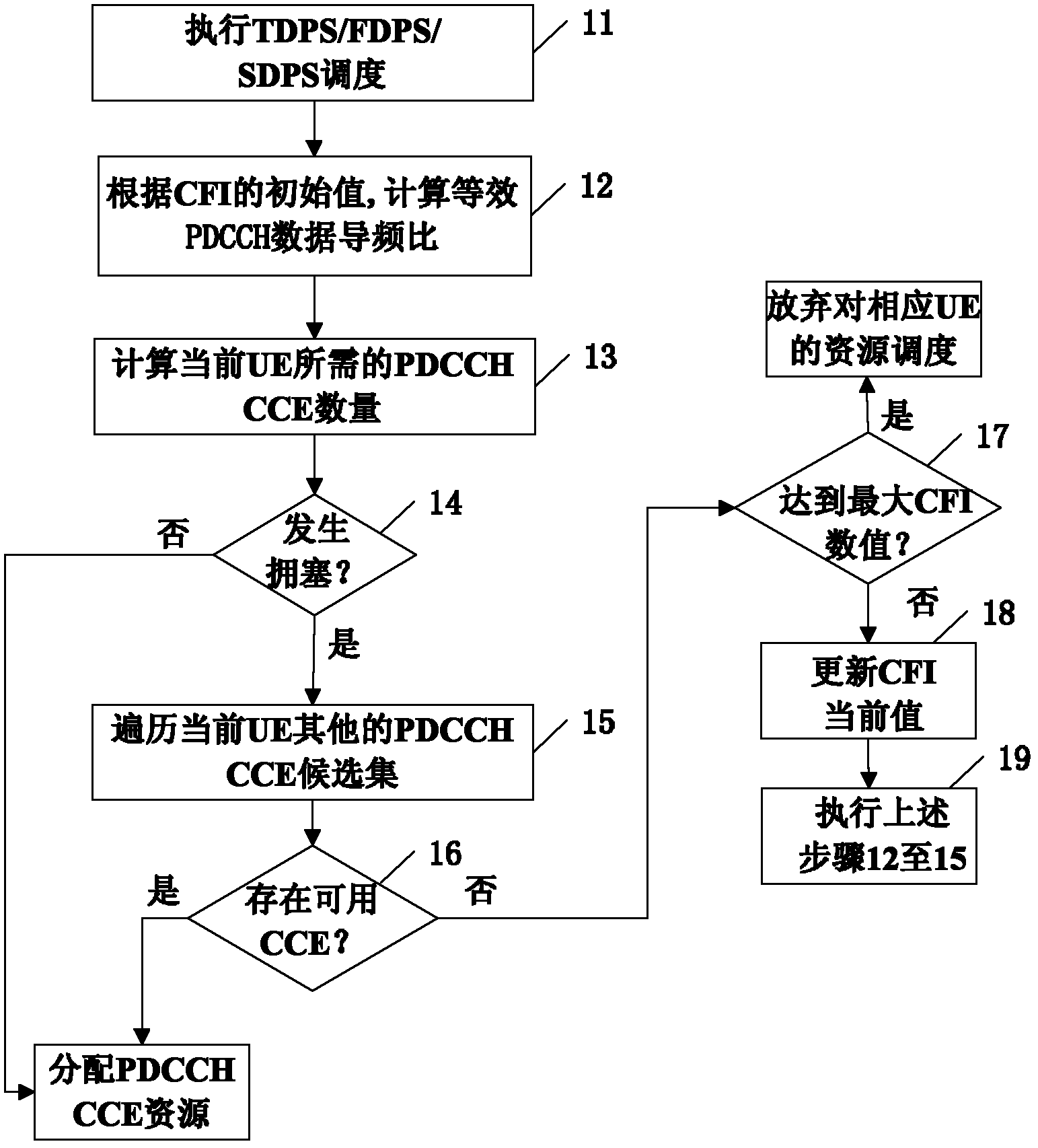Method and device for controlling physical downlink control channel (PDCCH) transmission
A physical downlink control and control channel technology, applied in wireless communication, electrical components, etc., can solve the problems affecting the throughput of the downlink system and the number of online users, the waste of PDCCH and PDSCH resources, and the inability to allocate resources at the same time, so as to improve throughput traffic and online users, reduce PDCCH collisions, and improve resource utilization
- Summary
- Abstract
- Description
- Claims
- Application Information
AI Technical Summary
Problems solved by technology
Method used
Image
Examples
Embodiment 1
[0027] This embodiment provides a method for controlling transmission of a physical downlink control channel, the method including:
[0028] 11: Execute TDPS / FDPS / SDPS scheduling.
[0029] In this step, resource scheduling is performed according to Time Domain Packet Scheduling (TDPS), Frequency Domain Packet Scheduling (FDPS) or Spacial Domain Packet Scheduling (SDPS). For example, the eNB selects UEs that can be scheduled according to available resources, and pre-allocates physical resource blocks (Physical Resource Blocks, PRBs) used by PDSCH for these UEs; and calculates the starting position of the PDCCH CCE of the UE that can be scheduled according to the Hash function, etc. .
[0030] 12: Obtain an initial value of a Control Format Indicator (CFI), and calculate an equivalent physical downlink control channel (PDCCH) data-to-pilot ratio of the current user equipment (UE) according to the initial value of the CFI.
[0031] The pilot ratio calculated in step 12 is an eq...
Embodiment 2
[0040] The method for controlling the transmission of the physical downlink control channel provided in this embodiment adopts a semi-static PDCCH total power setting, that is, a power pool is set for the PHICH, and its change and update are slow, so that the calculated PDCCH power also changes and updates slowly. It may be called "semi-static PDCCH total power setting".
[0041] This method mainly adopts a link-adaptive conflict resolution method, the main point of which is: when a CCE conflicts, traverse other possible CCE search spaces; if there is a non-conflicting CCE space available, resolve the conflict, otherwise, give up Resource scheduling for low-priority UEs among UEs corresponding to conflicting PDCCH CCEs. First, execute TDPS / FDPS / SDPS scheduling, see step 11 above for this step. Then, perform the acquisition operation of the CFI initial value, including at least the following four methods:
[0042] Method 1: Calculate the initial value of CFI based on the stat...
Embodiment 3
[0103] The solution of the third embodiment further optimizes and integrates the resources on the basis of the second embodiment, and improves the utilization rate of the resources. The main difference between Embodiment 3 and Embodiment 2 is that, see figure 2 , in step 5 of the second embodiment, if there is still no resource to allocate after traversing the CCE candidate set of UE k, then abandon the scheduling of UE k currently being processed, release the physical resource block PRB allocated for the current UE, and continue Treat it as follows:
[0104] 6. Process the schedulable UEs that have been pre-allocated PRB resources according to the above steps 2-5 until all UEs are processed;
[0105] 7. Determine whether there are released PRB resources and whether there are remaining PDCCH CCE resources available;
[0106] 8. If there are both PRB and remaining CCE resources, then go to step 9; if there is no one or both of PRB and remaining CCE resources, go to step 11; ...
PUM
 Login to View More
Login to View More Abstract
Description
Claims
Application Information
 Login to View More
Login to View More - R&D
- Intellectual Property
- Life Sciences
- Materials
- Tech Scout
- Unparalleled Data Quality
- Higher Quality Content
- 60% Fewer Hallucinations
Browse by: Latest US Patents, China's latest patents, Technical Efficacy Thesaurus, Application Domain, Technology Topic, Popular Technical Reports.
© 2025 PatSnap. All rights reserved.Legal|Privacy policy|Modern Slavery Act Transparency Statement|Sitemap|About US| Contact US: help@patsnap.com



